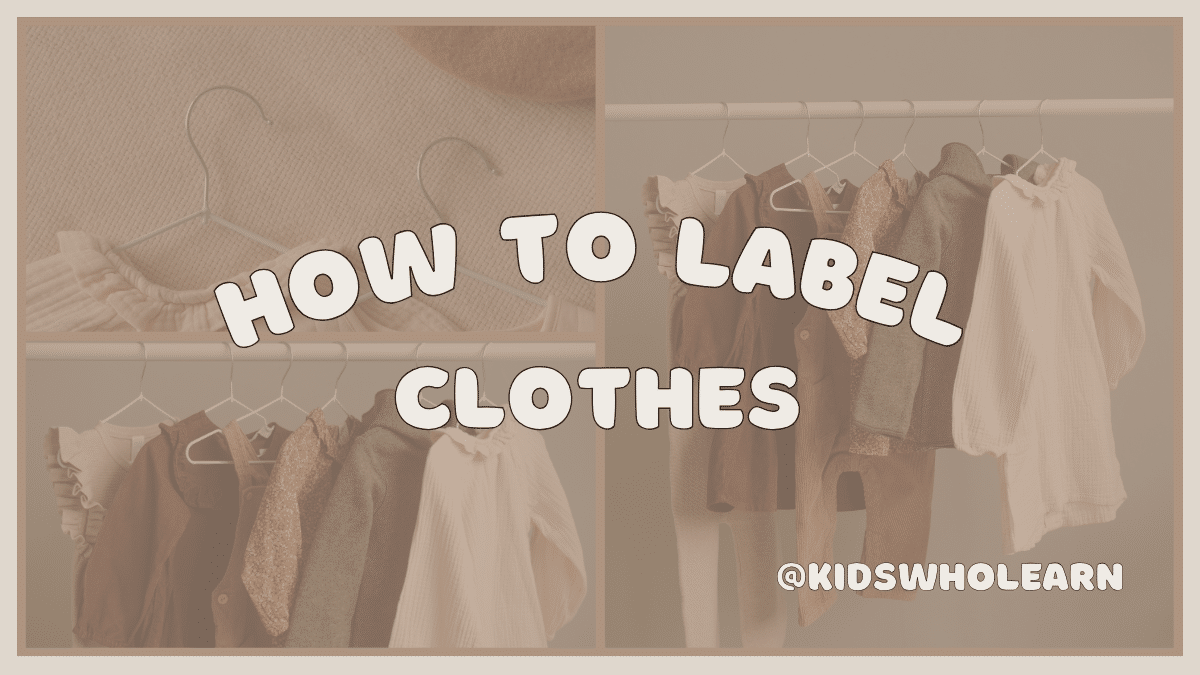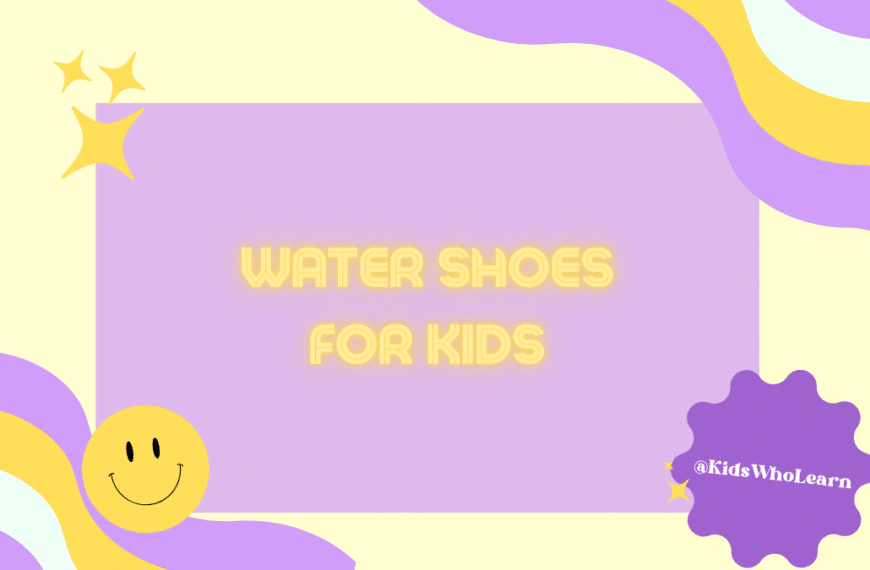Labeling clothes is an essential task that ensures you can easily identify your clothes. Whether you are labeling clothes for your children’s school uniforms or labeling clothes in a care home, labeling clothes can save you time and money in the long run. In this article, we will provide you with tips on how to label clothes effectively to ensure your clothes are easily identifiable.
Understanding the need for labeling clothes is crucial in ensuring that you label your clothes correctly. Labeling clothes can help you keep track of your clothes, especially when you have a large wardrobe. Additionally, labeling clothes can help you identify your clothes in case you misplace them. In this article, we will provide you with tips on how to choose the right label material, create unique and identifiable labels, and maintain and care for labeled clothes.
Key Takeaways
- Labeling clothes is essential in ensuring you can easily identify your clothes.
- Choosing the right label material and creating unique and identifiable labels are crucial in ensuring that your clothes are easily identifiable.
- Maintaining and caring for labeled clothes is essential in ensuring that your labels remain legible and identifiable.
Understanding the Need for Labeling Clothes
Labeling clothes is an essential step in maintaining your wardrobe. It helps you keep track of your clothes, organize them, and prevent mix-ups. Here are a few reasons why labeling clothes is important:
1. Identifying Your Clothes
Labeling clothes is a simple and effective way to identify your clothes. It helps you distinguish your clothes from others, especially when you share a closet or laundry room with others. By labeling your clothes, you can easily identify which items belong to you and which ones don’t.
2. Keeping Track of Your Clothes
Labeling clothes also helps you keep track of your clothes. It allows you to monitor how often you wear certain items, which ones need to be washed, and which ones need to be repaired or replaced. This can help you save time and money in the long run.
3. Organizing Your Clothes
Labeling clothes can also help you organize your wardrobe. You can label your clothes by category, such as work clothes, casual clothes, or sports clothes. This can help you find what you need quickly and easily, and also make it easier to put your clothes away.
4. Preventing Mix-Ups
Labeling clothes can also prevent mix-ups. If you have children or roommates, labeling their clothes can prevent them from accidentally wearing each other’s clothes. It can also prevent clothes from getting lost or misplaced.
Overall, labeling clothes is a simple and effective way to maintain your wardrobe. It helps you identify your clothes, keep track of them, organize them, and prevent mix-ups. By taking the time to label your clothes, you can save time, money, and frustration in the long run.
Choosing the Right Label Material
When it comes to labeling clothes, choosing the right label material is crucial. The material you choose will affect the durability, comfort, and appearance of the label. Here are some options to consider:
1. Cotton
Cotton labels are a popular choice for clothing because they are soft, comfortable, and durable. They are also easy to print on, making them a great option for custom designs. However, cotton labels may shrink or fade over time, so they are not recommended for items that require frequent washing.
2. Polyester
Polyester labels are a great option for clothing that will be exposed to moisture or heat, as they are resistant to both. They are also durable and can withstand frequent washing without fading or shrinking. However, polyester labels may not be as comfortable as other materials, so they may not be the best choice for clothing that will be in direct contact with the skin.
3. Nylon
Nylon labels are a strong and durable option for clothing. They are resistant to wear and tear and can withstand frequent washing without fading or fraying. Nylon labels are also water-resistant, making them a good choice for outdoor clothing or swimwear. However, they may not be as comfortable as other materials, so they may not be the best choice for clothing that will be in direct contact with the skin.
4. Satin
Satin labels are a luxurious option for clothing. They are soft, smooth, and comfortable, making them a great choice for items that will be in direct contact with the skin. Satin labels are also durable and can withstand frequent washing without fading or fraying. However, they may not be as practical for outdoor clothing or items that will be exposed to moisture.
When choosing the right label material for your clothing, consider the durability, comfort, and appearance of the label. Each material has its own unique characteristics, so choose the one that best fits your needs.
Creating Unique and Identifiable Labels
When it comes to labeling clothes, creating unique and identifiable labels is important. A well-designed label can help your brand stand out and make it easier for customers to recognize your products. Here are some tips on how to create unique and identifiable labels for your clothes.
Designing the Label
The design of your label is crucial in creating a unique and identifiable label. You want to make sure that your label represents your brand and is easy to read. Here are some tips on designing your label:
- Keep it simple: A simple design is often more effective than a complex one. Avoid cluttering your label with too much information or graphics.
- Use your brand colors: Incorporate your brand colors into your label design. This will help customers recognize your brand more easily.
- Include your logo: Your logo is an important part of your brand identity. Make sure to include it on your label.
Choosing the Right Font and Size
The font and size of your label are also important in creating a unique and identifiable label. Here are some tips on choosing the right font and size:
- Use a legible font: Make sure that your font is easy to read. Avoid using overly decorative fonts that may be difficult to read.
- Choose the right size: Your label should be large enough to be easily read, but not so large that it overwhelms your garment.
- Consider the material: The font and size that you choose may vary depending on the material of your garment. For example, a smaller font may be necessary for a label on a small tag.
Selecting Colors
The colors that you choose for your label can have a big impact on its effectiveness. Here are some tips on selecting colors:
- Use your brand colors: As mentioned earlier, incorporating your brand colors into your label design can help customers recognize your brand more easily.
- Consider contrast: Make sure that your label colors contrast well with the color of your garment. This will make it easier to read.
- Think about the mood: The colors that you choose can also affect the mood of your label. For example, bright colors may be more appropriate for a playful brand, while muted colors may be better for a more serious brand.
By following these tips, you can create unique and identifiable labels for your clothes that will help your brand stand out.
Methods of Labeling Clothes
Labeling your clothes is an important step in keeping your wardrobe organized. Here are some methods you can use to label your clothes:
Hand Sewing
Hand sewing is a traditional and reliable method of labeling clothes. It is best for small labels that won’t be seen on the outside of the garment. Here are the steps to hand sew a label:
- Cut a small piece of fabric to use as your label.
- Fold the edges of the fabric under to create a clean edge.
- Use a needle and thread to sew the label onto the inside of the garment, being careful not to let the stitches show on the outside.
Machine Sewing
Machine sewing is a faster method of labeling clothes than hand sewing. It is best for larger labels that will be visible on the outside of the garment. Here are the steps to machine sew a label:
- Cut a piece of fabric to the size of your label.
- Use a sewing machine to sew the label onto the garment, using a zigzag stitch to prevent fraying.
Iron-On Labels
Iron-on labels are a convenient method of labeling clothes. They can be easily applied with an iron and are durable enough to withstand multiple washings. Here are the steps to apply an iron-on label:
- Cut out the label from the sheet of iron-on labels.
- Place the label on the garment in the desired location.
- Cover the label with a piece of cloth.
- Use a hot iron to press the label onto the garment for the recommended amount of time.
Stick-On Labels
Stick-on labels are a quick and easy method of labeling clothes. They can be applied in seconds and are removable, making them a good choice for temporary labeling. Here are the steps to apply a stick-on label:
- Peel the label off the backing paper.
- Place the label on the garment in the desired location.
- Press the label firmly onto the garment.
By using these methods, you can easily label your clothes and keep your wardrobe organized.
Maintaining and Caring for Labeled Clothes
When you take the time to label your clothes properly, it’s important to maintain and care for them so that the labels stay readable and effective. Here are some tips for keeping your labeled clothes in great condition.
Washing Instructions
When washing your labeled clothes, it’s important to follow the instructions on the label. If the label says to wash in cold water, use cold water. If the label says to hang dry, hang the garment to dry instead of putting it in the dryer.
If you’re not sure how to wash a particular garment, err on the side of caution and wash it in cold water on a gentle cycle. Avoid using bleach or fabric softeners, as these can damage the label and the garment itself.
Handling Instructions
In addition to washing, it’s important to handle your labeled clothes with care. Avoid pulling or stretching the label, as this can cause it to fray or become unreadable.
When storing your clothes, try to fold them neatly instead of hanging them, as hanging can put stress on the label. If you do hang your clothes, use hangers that are appropriate for the garment and won’t cause the label to stretch or warp.
If you notice that a label is starting to come loose, don’t try to rip it off or cut it off. Instead, gently sew it back into place or take the garment to a professional for repair.
By following these simple tips, you can help ensure that your labeled clothes stay readable and effective for years to come.
Legal Aspects of Labeling Clothes
When it comes to labeling clothes, there are certain legal aspects that you need to consider. These include trademark laws and labeling laws. Here’s what you need to know:
Trademark Laws
Trademark laws are designed to protect the intellectual property rights of businesses and individuals. When it comes to labeling clothes, you need to make sure that you’re not infringing on anyone’s trademark.
This means that you should avoid using logos, designs, or other elements that are protected by trademark law. If you’re not sure whether something is protected, it’s best to err on the side of caution and avoid using it.
Labeling Laws
Labeling laws are designed to ensure that consumers have access to accurate and relevant information about the products they’re buying. When it comes to labeling clothes, there are several things you need to include on the label:
- Fiber content: You need to list the fiber content of the garment, including the percentage of each fiber.
- Care instructions: You need to provide care instructions for the garment, including washing, drying, and ironing instructions.
- Country of origin: You need to disclose the country where the garment was made.
- Manufacturer or importer information: You need to include the name and address of the manufacturer or importer.
In addition to these requirements, there may be additional labeling laws that apply to specific types of garments or materials. Be sure to do your research and make sure you’re complying with all applicable laws.
Overall, it’s important to take legal aspects into account when labeling clothes. By doing so, you can avoid legal issues and ensure that your customers have access to accurate and relevant information about your products.
Conclusion
Labeling your clothes is an essential task that helps you stay organized and save time. By following the tips and tricks outlined in this article, you can ensure that your clothes are labeled correctly and are easy to find when you need them.
Remember to use high-quality labels that are durable and can withstand multiple washes. It’s also essential to choose the right labeling method that suits your needs and preferences. Whether you prefer iron-on labels or sewn-in tags, make sure you follow the manufacturer’s instructions carefully.
Additionally, it’s crucial to label all your clothes, including your undergarments, socks, and accessories. This will help you identify your items quickly and avoid any confusion or mix-ups.
Finally, make sure you keep track of your labeled clothes by creating a detailed inventory list. This will help you keep track of your clothes and ensure that you don’t lose anything.
By following these simple steps, you can ensure that your clothes are labeled correctly and are easy to find when you need them. Happy labeling!
Frequently Asked Questions
What are the best washable labels for clothing?
The best washable labels for clothing are those that are made of durable materials that can withstand multiple washes. Some popular options include iron-on labels, stick-on labels, and sew-in labels. It’s important to choose a label that will not fade or peel off after washing.
How do I label my child’s clothes for daycare?
Labeling your child’s clothes for daycare is important to keep track of their belongings. You can use stick-on labels or iron-on labels that have your child’s name on them. Make sure to label all of their clothing items including jackets, hats, and shoes.
What are the benefits of using personalized name labels for clothing?
Using personalized name labels for clothing can help prevent lost items and mix-ups. It can also help your child identify their own clothing and feel more independent. Personalized name labels can also be a fun way to add personality to your child’s clothing.
Are sew-on labels the best option for labeling clothes?
Sew-on labels can be a great option for labeling clothes, especially for items that will be washed frequently. However, they may not be the best option for items that have delicate fabrics or that cannot be sewn on. Stick-on or iron-on labels can be a better choice for these types of items.
What are some tips for labeling clothes for kids?
When labeling clothes for kids, it’s important to use durable labels that will not fade or peel off after washing. Make sure to label all of their clothing items including jackets, hats, and shoes. You can also use different colors or designs for each child to make it easier to identify their belongings.
Can a Sharpie be used to label clothes?
While a Sharpie can be used to label clothes, it may not be the most durable option. The ink may fade or smudge after washing, and it may not be as easy to read as a label that is specifically designed for clothing. Stick-on or iron-on labels are a better option for long-lasting and easy-to-read labels.







